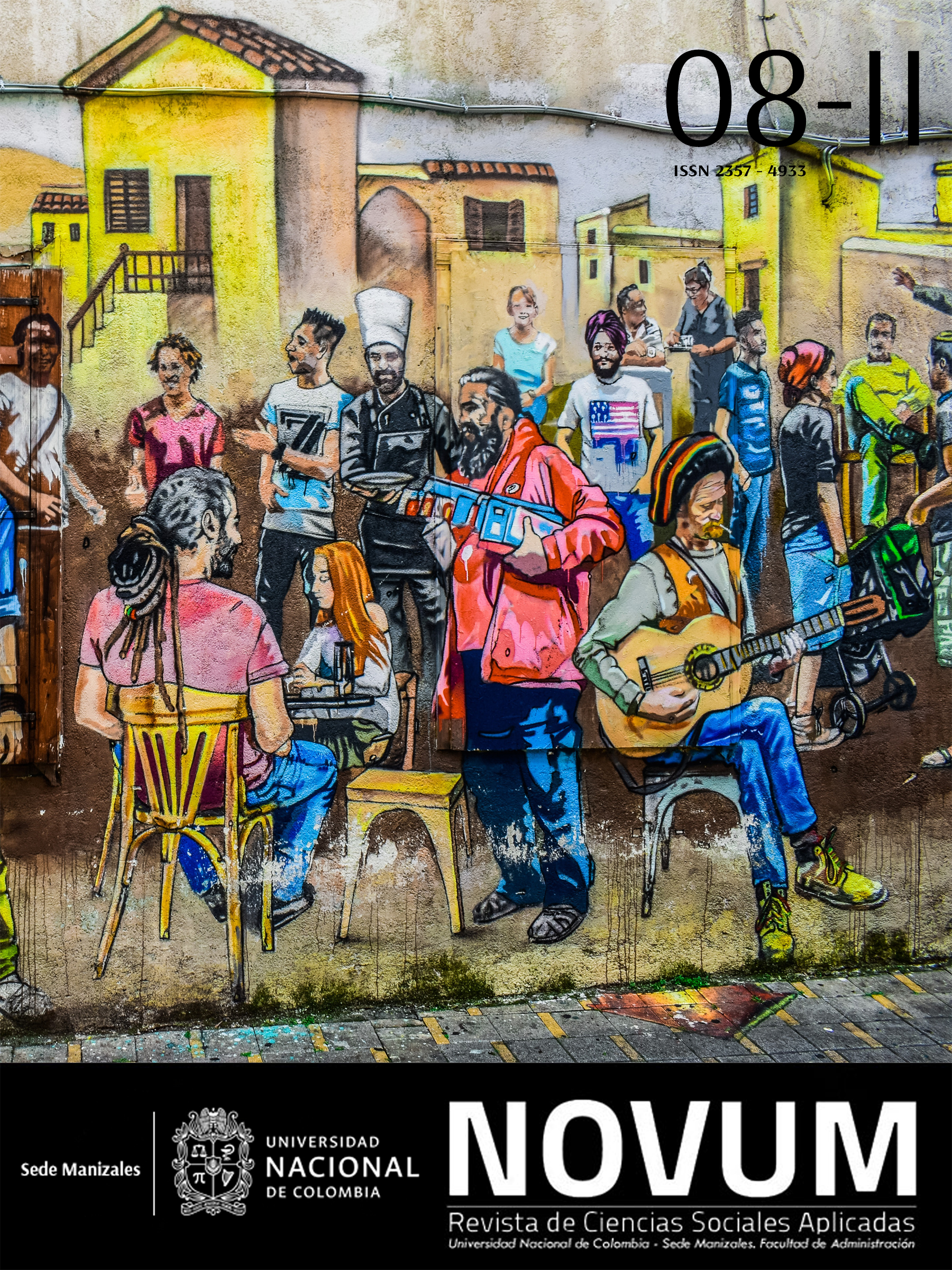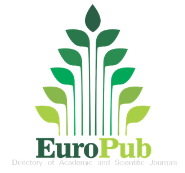La imagen de los destinos turísticos: una aproximación conceptual
The image of tourist destinations: a conceptual approach
Palabras clave:
Destinos Turísticos, Imagen del Destino, Competitividad Turística (es)Tourist Destinations, Image of the Destination, Tourist Competitiveness. (en)
Descargas
Referencias
Aaker, D. A; Joachimsthaler, E; Del Blanco, R. M. A. & Fons, V. C. (2005). Liderazgo de marca. Deusto.
Alzua-Sorzabal, A; Zurutuza, M; Rebón, F. & Gerrikagoitia, J. K. (2015). Obtaining the efficiency of Tourism Destination website based on Data Envelopment Analysis. Procedia-Social and Behavioral Sciences, 175, 58-65.
Baggio, R. (2008). Symptoms of complexity in a tourism system. Tourism Analysis, 13(1), 1-20.
Baggio, R. (2013). Studying complex tourism systems: a novel approach based on networks derived from a time series. arXiv preprint arXiv:1302.5909.
Barbosa, L. G. M; Oliveira, C. T. F. D. & Rezende, C. (2010). Competitiveness of tourist destinations: the study of 65 key destinations for the development of regional tourism. Revista de Administração Pública, 44(5), 1067-1095.
Bertoni, M; López, M. J; Testa, J. & Lawler, L. (2013). La planificación estratégica y sustentable del turismo en el Partido de Necochea.
Borzyszkowski, J. (2013). Destination management organizations (DMOs) and crisis management. Journal of Tourism & Services, 4(7).
Burt, R. S. (2017). Structural holes versus network closure as social capital. In Social capital (pp. 31-56). Routledge.
Cooper, C; Gilbert, D; Fletcher, J. & Wanhill, S. (2001) "Turismo: princípios e prática". Bookman, São Paulo.
De Jager, A. E. (2010): “how dull is dullstroom? exploring the tourism destination image of dullstroom”, in: Tourism Geographies, vol. 12, nº 3.
Debarliev, S. & Mitrovska, S. (2016). Creating Distinctive Value Proposition in Tourism by Business Model Tools: Case Study of the City of Ohrid. European Scientific Journal, ESJ, 12(35).
Del Chiappa, G. & Baggio, R. (2015). Knowledge transfer in smart tourism destinations: Analyzing the effects of a network structure. Journal of Destination Marketing & Management, 4(3), 145-150.
Dimoska, T; Tuntev, Z. & Nikolovski, B. (2015). The relationship between small and medium-sized enterprises, tourism and economic development. License: CC BY 4.0.
Dowling, G. (1994): Corporate reputations: strategies for developing the corporate brand. London: Kogan Page.
Du Toit, L ; Fourie, J. & Trew, D. (2010). The sources of comparative advantage in tourism. Stellenbosch Economic working papers, 01/10.
Echtner, C. & Brent, J.R. (1991): “The Meaning and Measurement of Destination Image”.
Elche, D; Martínez-Pérez, Á. & García-Villaverde, P. M. (2017). Inter-Organizational Relationships, Knowledge Strategy and Innovation in Clusters of Cultural Tourism. Investigaciones Regionales, (39), 17-37.
Gartner, W. C. (1994) "Image formation process". Journal of Travel and Tourism Marketing 2(273).
George, B. P. (2017). The evolution of destination branding: A review of branding literature in tourism. Journal of Tourism, Heritage & Services Marketing, 3(1), 9.
González, P. E. G. & Mendoza, J. R. R. (2014). Introducción al turismo. Grupo Editorial Patria.
Gu, Z ; Zhang, Y ; Chen, Y. & Chang, X. (2016). Analysis of attraction features of tourism destinations in a mega-city based on check-in data mining—A case study of ShenZhen, China. ISPRS International Journal of Geo-Information, 5(11), 210.
Hankinson, G. (2007). The management of destination brands: Five guiding principles based on recent developments in corporate branding theory. Journal of Brand Management, 14(3), 240-254.
Hanlan, J; Fuller, D. & Wilde, S. (2006). Destination decision making: the need for a strategic planning and management approach. Tourism and Hospitality Planning & Development, 3(3), 209-221.
Haugland, S. A; Ness, H., Grønseth, B. O. & Aarstad, J. (2011). Development of tourism destinations: An integrated multilevel perspective. Annals of tourism research, 38(1), 268-290.
Henderson, J. C. (2007). Destination development: Singapore and Dubai compared. Journal of travel & tourism marketing, 20(3-4), 33-45.
Hristov, D. & Zehrer, A. (2015). The destination paradigm continuum revisited: DMOs serving as leadership networks. Tourism Review, 70(2), 116-131.
Hsieh, M. H; Pan, S. L. & Setiono, R. (2004). Product-, corporate-, and country-image dimensions and purchase behavior: A multicountry analysis. Journal of the Academy of Marketing Science, 32(3), 251-270.
Hunt, G.J. (1975): “Image as a factor in tourism development”. Journal of Travel Research, 13 (3) (Winter), 1-7.
Ibrahim, E. E. & Gill, J. (2005). A positioning strategy for a tourist destination, based on analysis of customers' perceptions and satisfactions. Marketing Intelligence & Planning, 23(2), 172-188.
Jensen, Ø. & Prebensen, N. (2015). Innovation and value creation in experience-based tourism.
King, B. (1997): Creating Islands Resorts. London. Ed. Routledge.
Kotler, P; García de Maradiaga M. J; Flores Zamora, J; Bowen, J. T. & Makens, J. C. (2011). Marketing turístico. PEARSON EDUCATIVA, SA.
Lahorka, H; & Kornelija, S. (2016). Strategic approach to tourism destination management. Zeszyty Naukowe Małopolskiej Wyższej Szkoły Ekonomicznej w Tarnowie, (4 (32)), 77-86.
Leisen, B. (2001). “image segmentation: the case of a tourism destination”, in: Journal of Services Marketing, vol. 15, 1.
Lopes, S. D. F. (2011). Destination image: Origins, developments and implications. PASOS. Revista de Turismo y Patrimonio Cultural, 9(2), 305-315.
Luo, W. (2018). Evaluating Tourist Destination Performance: Expanding the Sustainability Concept. Sustainability, 10(2), 516.
Manhas, P. S; Manrai, L. A. & Manrai, A. K. (2016). Role of tourist destination development in building its brand image: A conceptual model. Journal of Economics, Finance and Administrative Science, 21(40), 25-29.
Marujo, M. (2008) "Turismo e comunicação". RVJ editores, Castelo Branco.
Marujo, N. (2012). Imagen y promoción de los destinos turísticos en internet: El caso de los municipios de la Isla Madeira. Estudios y perspectivas en turismo, 21(4), 825-837.
Moody, P. E. (1991). Toma de decisiones gerenciales. Bogotá: McGraw Hill.
Ndivo, R. M; Waudo, J. & Waswa, F. (2013). From national to regional tourism development focus in Kenya: Examining the challenges and opportunities. Tourism Planning & Development, 10(1), 99-109.
Negrusa, A. L; Lupu, N; Coros, M. M. & Moca, C. M. (2017). Destination Management Organization’S (Dmo’S) Roles, Structures and Performance–Comparative Analysis. In Proceedings of the International Management Conference (Vol. 11, No. 1, pp. 72-81). Faculty of Management, Academy of Economic Studies, Bucharest, Romania.
Pallavicini, J. A. C. (2017). Factors influencing tourism destinations attractiveness the case of Malaga.
Pike, S. & Page, S. (2014). Destination Marketing Organizations and destination marketing: A narrative analysis of the literature. Tourism Management. 41:1-26.
Pons, R. C; Morales, L. & Díaz, Y. (2007). La imagen del destino y el comportamiento de compra del turista. Teoría y praxis, (3).
Presenza, A. & Cipollina, M. (2010). Analysing tourism stakeholders networks. Tourism Review, 65(4), 17-30.
Remoaldo, P. C. & Ribeiro, J. C. (2014). Holistic approach, tourism. In Encyclopedia of Tourism (pp. 1-2). Springer International Publishing.
Ries, A; Trout, J. & Ampudia, G. P. (1982). Posicionamiento. McGraw Hill.
Rolstadås, A. (Ed.). (2013). Benchmarking—theory and practice. Springer
Rosa, B. (2003) "La imagen turística de las regiones insulares: las islas como paraísos". Cuadernos de Turismo Nº11: 127-13.
Scott, N. (2013). Tourism is a fragmented industry and policy area: Myth or reality? In Conference Proceedings of the Myths of Tourism Conference.
Scott, R. (2011). Benchmarking: A literature review. Academic Excellence Centre for Learning and Development, Edith Cowan University. The Journal of Tourism Studies. Vol 2 Nº2. Department of Tourism.
Serban-Comanescu, A. (2017). The Impact of Tourism on the Global Economic System. Ovidius University Annals, Economic Sciences Series, 17(1), 384-387.
Serralvo, F. A. & Furrier, M. T. (2005). Tipologías del posicionamiento de marcas. Un estudio conceptual en Brasil y en España. Revista Galega de economía, 14(1-2).
Smagina, N. N; Magomedov, M. G. & Buklanov, D. A. (2017). Sustainable Competitive Advantage of the International Business Tourism on the Regional Level. In Overcoming Uncertainty of Institutional Environment as a Tool of Global Crisis Management (pp. 541-548). Springer, Cham.
Tinsley, R. & Lynch, P. A. (2007). Small business networking and tourism destination development: A comparative perspective. The International Journal of Entrepreneurship and Innovation, 8(1), 15-27.
Trout, J. & Ries, A. (1986). Positioning: The battle for your mind. McGraw-Hill.
Tsaur, S. H; Yen, C. H. & Yan, Y. T. (2016). Destination brand identity: scale development and validation. Asia Pacific Journal of Tourism Research, 21(12), 1310-1323.
Valls, J.F. (1992). La imagen de marca de los países. Mcgraw-hill, Madrid.
Vanhove, N. (2017). The Economics of Tourism Destinations: Theory and Practice. Routledge.
Volkovich, Y; Scellato, S; Laniado, D; Mascolo, C. & Kaltenbrunner, A. (2012). The Length of Bridge Ties: Structural and Geographic Properties of Online Social Interactions. In ICWSM.
Woodside, A.G. & Lysonsky, S. (1989). “A general model of traveler destination choice”, in: Journal of Travel Research, vol. 27, nº 4.
Cómo citar
APA
ACM
ACS
ABNT
Chicago
Harvard
IEEE
MLA
Turabian
Vancouver
Descargar cita
Visitas a la página del resumen del artículo
Descargas
Licencia
Derechos de autor 2018 Alejandro Echeverri Rubio, Santiago Castañeda Betancur

Esta obra está bajo una licencia internacional Creative Commons Atribución-NoComercial-CompartirIgual 4.0.
Los autores que publiquen en esta revista aceptan las siguientes condiciones:
- La Revista no tiene costos de publicación y/o sometimiento. No se cobrará ningun valor económico al autor que proponga sus artículos a esta publicación.
- La Revista no tiene precio de venta al público y se distribuirá de manera gratuita por medio del Portal de Revistas de la Universidad Nacional de Colombia.
- Los autores conservan los derechos de autor y ceden a la revista el derecho de la primera publicación, con el trabajo registrado con la Attribution-NonCommercial-ShareAlike 4.0 International (CC BY-NC-SA 4.0) que permite a otros distribuir, remezclar, retocar, y crear a partir de la obra de modo no comercial, siempre y cuando den crédito y licencien sus nuevas creaciones bajo las mismas condiciones.
- Los autores pueden realizar otros acuerdos contractuales independientes y adicionales para la distribución no exclusiva de la versión del artículo publicado en esta revista (p. ej., incluirlo en un repositorio institucional o publicarlo en un libro) siempre que indiquen claramente que el trabajo se publicó por primera vez en esta revista.
- Todos los extractos de texto tomados de los artículos publicados en NOVUM deberan ser citados de manera adecuada según la normativa de citación y referenciación (APA, MLA, CHICAGO, etc.).



















